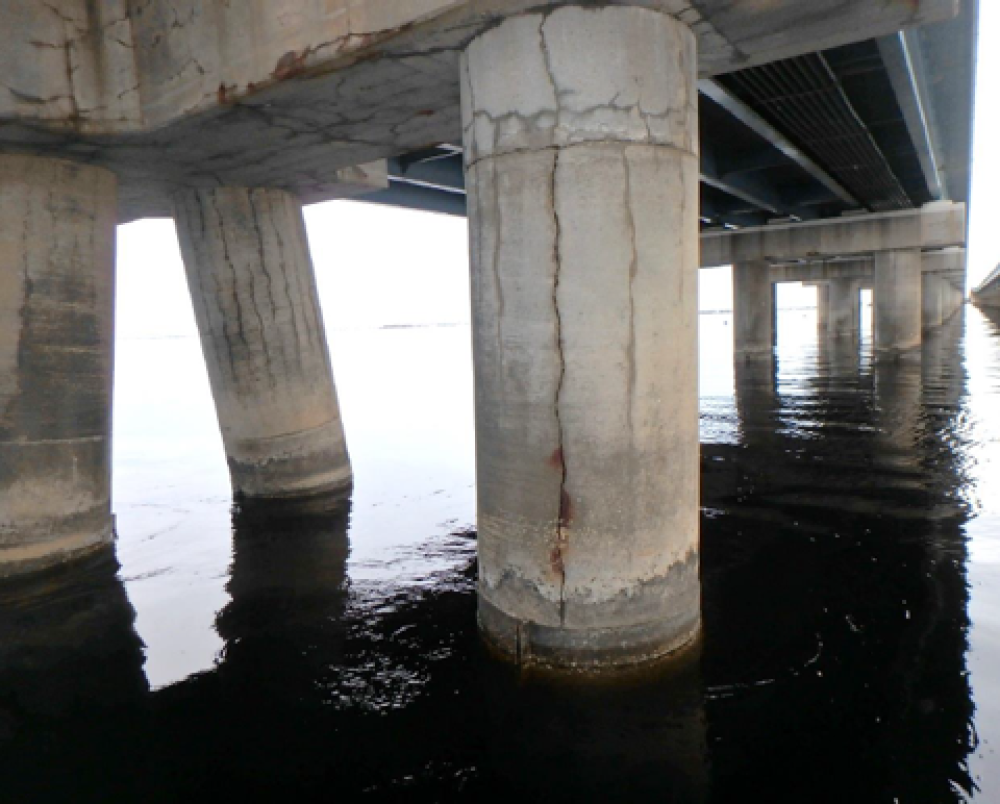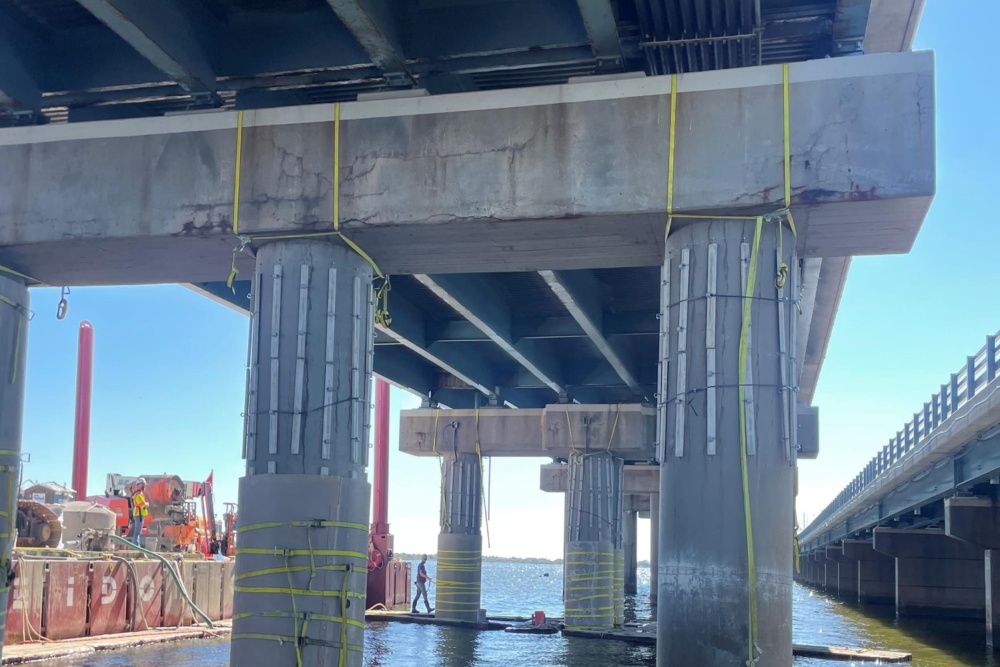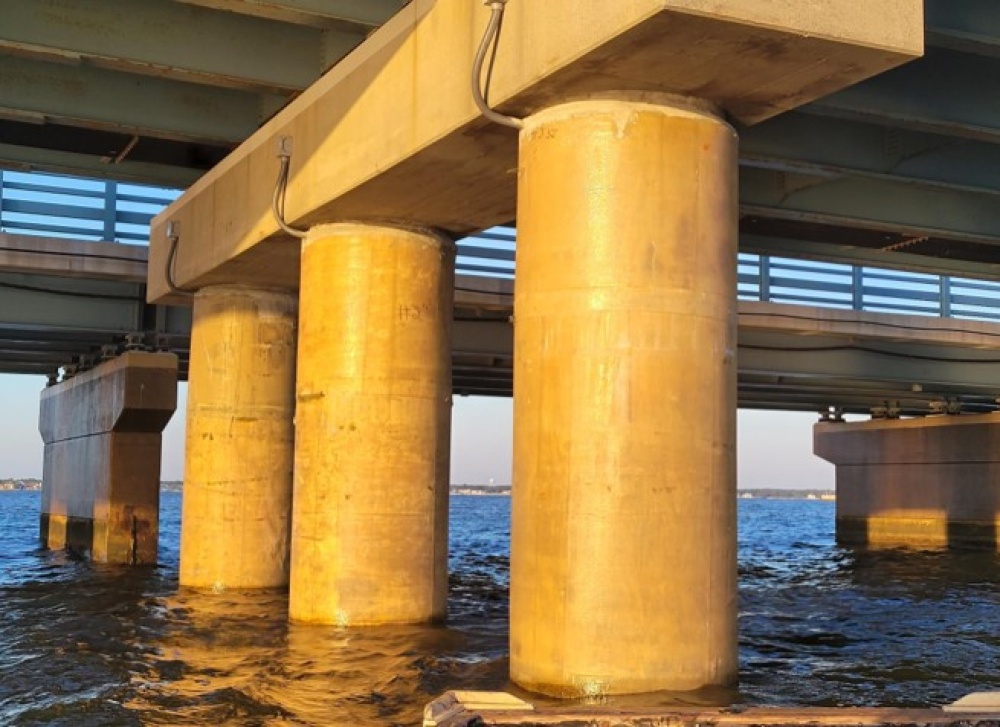Tunney Bridge

The 50-span, nearly one-mile-long structure was constructed in 1969 and connects Toms River, NJ, with Pelican Island and other New Jersey beach communities. The Bridge was built with Precast Prestressed girders and bents consisting of 54-inch precast prestressed cylinder piles.
The Problem
During a routine inspection of the bridge, it was identified that severe cracking had occurred throughout the precast prestressed cylinder piles. VCS Engineering Inc. was brought in to do an in-depth corrosion evaluation of the piles. Upon further investigation, it was identified that corrosion due to the bay’s salt water had severely damaged some of the tendons within the piles.
Several other testing methods were used to determine the severity and locations of the corrosion on the prestressed cylinder piles, including Concrete Chloride Sampling, Ground Penetrating Radar, and Corrosion Potential Mapping. The results from the testing concluded that a protection system would be needed for all areas of piles, both submerged in water as well as areas that were above the tidal zone.

Our Solution
Vector Corrosion Technologies was able to develop a custom Cathodic Protection Jacket solution that incorporated a galvanic anode system to address both areas of the piles, submerged and atmospheric. Galvashield® DAS Marine anodes were used within the submerged zone of the piles to protect both the underwater portion of the piles along with the tidal zones. Galvashield® DAS Anodes were used for the areas of the pile that are consistently above tide level but are corroding due to salt water splashing and atmospheric salts in the air. This anode system was encased in a stay-in-place form and grouted in place. Lastly, a junction/monitoring box was incorporated in order to verify the Cathodic Protection Jacket System’s functionality and performance.

The Result
The New Jersey Department of Transportation decided to utilize the Cathodic Protection Pile Jacket system due to its minimal impact on the bridge and the life extension benefits it provided. Traffic on the bridge did not have to be disturbed while the construction of the pile jackets took place.
Also, the Cathodic Protection Jacket System was designed for a life extension of 25 years. This solution will add years of service to a vital roadway that connects New Jersey’s mainland to its island getaways.

Technology Used
These innovative products and technologies were used on this project.